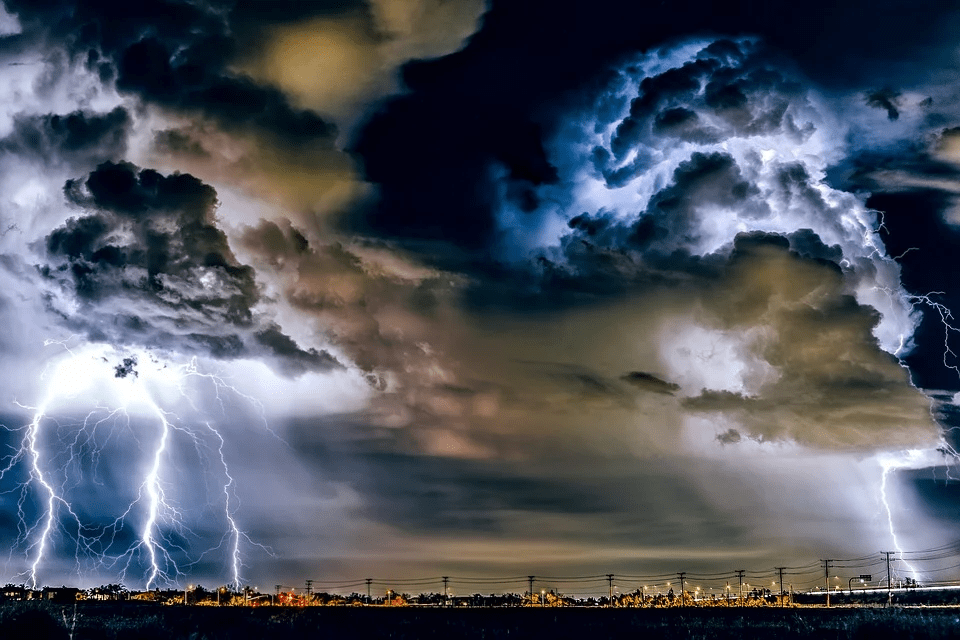It was a pleasant day one morning. The clouds are in the sky forming different shapes and sizes. Ben and Mike decided to go for a hike to breathe some colder and fresher air of the mountain. They packed their things, brought water, food, and other essential stuff for the day’s adventure. Without checking the weather forecast during the night, they assumed it would be a fine day to spend for a thrilling hike.
When they nearly reach the summit, the clouds turned darker and became cumulonimbus clouds which signify that rain is coming. They rushed themselves to go back to the base before the rain pours. Ben was so scared as he hears the thunderstorms. Isn’t he supposed to fear the lightning than the rolling sound of thunders?
WHAT IS THUNDER?
Thunder is the sound produced when there is lightning. Since light waves travel faster than sound waves, thunder occurs when lightning is also produced. So, how is lightning produced? Water from different sources like rivers, lakes, or just the water from our daily activities such as when cooking, evaporate. This water forms into clouds of different forms, and shapes. At the cloud’s top, the temperature is very cold that water vapors form into tiny ice crystals. When the cloud formation becomes too heavy as too much water vapor clump together, the clouds will eventually collapse, and rain will soon pour out. Large and heavy particles of clouds usually have a negative charge, and lighter particles have a positive charge. The large particles are the ones that fall first and the separation of the charge of the cloud’s particles causes an electric voltage that causes lightning.
WHAT IS A THUNDERSTORM?
Meanwhile, a thunderstorm is a natural phenomenon that occurs when the electric charges become sufficiently large and lightning heats the air that it passes through leaving shock waves that produce sounds like drum rolls. Rain showers and lightning usually accompany thunderstorms. Severe thunderstorms may bring swirling air vortices that become powerful enough to form tornadoes.
WHERE DO THUNDERSTORMS OCCUR?
Thunderstorms occur in cumulonimbus clouds. Although some little to no precipitation, most thunderstorms are accompanied by strong winds and often produce heavy rain or snow, sleet, or hail. Strong or severe thunderstorms may trigger some of the most dangerous weather phenomena like large hail and tornadoes.
Thunderstorms occur in almost all regions of the world but are rare at latitudes above 50° N and 50° S and in polar regions. However, tropical regions and places with temperate temperatures are prone to thunderstorms.
In the Florida peninsula in the US occurs the greatest thunderstorm activities that reach about 80-100 thunderstorm days annually. The Gulf Coast and the mountains of New Mexico are the next in line with about 50-90 thunderstorm days in a year. On the other hand, Asia and Central Europe experience an average of 20-60 thunderstorm days in a year. At any one moment, it has been estimated that there are more or less 1800 thunderstorms in progress worldwide.
Meanwhile, thundershowers refer to relatively weak thunderstorms.
TYPES OF THUNDERSTORMS
Thunderstorms are categorized into four types: single-cell, multi-cell, squall line (also called a multi-cell line), and supercell. Determinant on the type depends on the instability and relative wind conditions at the atmosphere’s different layers.
Single-cell
These are brief and small thunderstorms, and because they are weak storms, they grew and quickly die in an hour or so. This type is also called “popcorn” convection. They are caused by heating on a summer afternoon, and they produce brief heavy lightning and rain.
Multi-cell
A multi-cell thunderstorm is composed of many single cells from different stages. The various thunderstorms in which new updrafts occur near the leading edge of air-cooled by the rain. Individual cells last about 30 to 60 minutes, but the entire system may stay for many hours. These thunderstorms may drive strong winds or brief tornadoes.
Squall line
A squall line or a quasi-linear convective system (QLCS) is a series of thunderstorms arranged in line. They occur along or ahead of a cold front and are often accompanied by “squalls” of high wind and heavy rain. Squall lines are just passing quickly and are less likely to produce tornadoes. Generally, they can be hundreds of miles long but are only 10 or 20 miles wide.
Supercell
A supercell thunderstorm lasts long. It is a highly organized storm feeding off a rotating updraft (a rising current of air) and is about 10 miles in diameter and reaches 50,000 feet tall. This thunderstorm is a sign of a tornado that usually happens after 20-60 minutes that they have appeared. Another term used by scientists is a mesocyclone when it is detected by Doppler radar.


